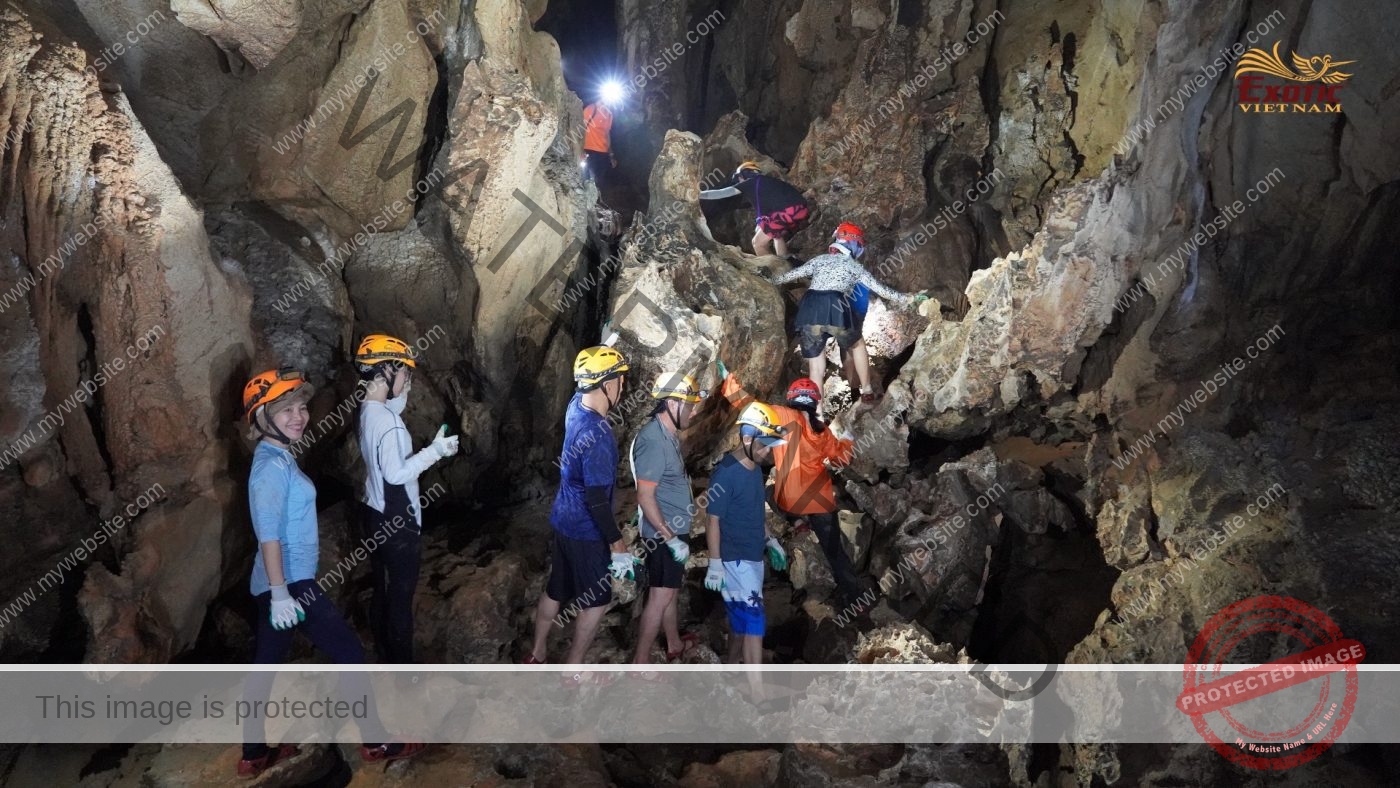Risks are always present, especially during outings to unfamiliar environments such as mountains, forests, or islands, where support services are often unavailable along the way. Corporate outings can include activities such as forest team building, triathlons, mountain trekking, or inflatable rafting, etc. Managing risks for these activities is crucial to ensure safety, maximize the positive impact of the experience, and contribute to the overall success of the program.

Classification of risks includes:
- The destination: The wilderness environment presents many potential risks, such as high cliffs, deep rivers, or wild animals. Fire safety awareness at the accommodation is also important.
- Activities: Accidents during outdoor activities such as mountain hiking, swimming, etc. Ensure food safety to provide healthy food and beverages
- The weather: Bad weather can disrupt plans or pose dangers to outdoor activities. Viet Nam’s climate is diverse and varies from north to south. You should choose a location with weather that suits your event.
- Health: Personal health issues of team members, such as allergies, illnesses, or poor physical condition.
- Organization: Schedule changes, lack of or poor-quality equipment, unqualified supervision team, etc.
- The team: Conflicts or disputes among team members, leading to lack of cooperation or ineffective collaboration.

Below are some guidelines for risk management planning before the activity:
- Destination: Contact local authorities or the management of nature reserves to learn about safety regulations. Strictly adhere to all rules regarding outdoor activities set by them. Identify potential risks such as uneven terrain, high cliffs, deep waters, strong currents, and wildlife. Ensure a reliable communication system to quickly reach all participants and leaders, especially in areas with no cell phone signal. In some cases, drones may be used to monitor activities and search for lost individuals in difficult terrains.
- Supervision: Establish a supervision team, assistants, or guides who are qualified and experienced in leading outdoor activities, responding promptly to emergencies, and possessing first aid skills. Set up a clear chain of command and communication methods for emergencies, so everyone knows whom to report to and how to report.
- Emergency response plan: Establish procedures for responding to injuries, emergencies, or accidents. Ensure easy access to first aid kits, transportation, and the nearest medical facilities, and have a plan in place to contact emergency services if needed.
- Participants: Gather information on participants’ health conditions. Assess their ability to safely engage in the planned activities or adjust the activities to match the physical fitness and experience level of the group. Avoid overly strenuous or dangerous activities for less experienced participants. Ensure participants are well-nourished, well-rested, and physically prepared at least 2-3 weeks before departure (through walking, running, etc.) to build endurance. Incorporate exercises that enhance muscle and joint flexibility before starting. Strictly follow the instructions of guides during all activities, especially in emergencies.
- Safety training: Provide detailed information about the itinerary, rules, and safety procedures to participants in advance. Highlight major risks and potential emergency procedures. Ensure participants understand the safety protocols and emergency procedures. Make sure everyone works well together and address any conflicts or risky behaviours promptly if they arise.
- Equipment check: Ensure that all outdoor equipment, whether it’s ropes, harnesses, or protective gear, is properly maintained and meets safety standards. Provide participants with appropriate clothing, helmets, or life jackets. Especially in remote mountainous areas, have GPS devices to track participants’ locations.
- Weather forecast: Regularly monitor weather forecasts before and during the event. Prepare contingency plans for severe weather, such as rescheduling or moving activities indoors. Have a flexible plan to adjust activities or locations based on sudden weather changes to avoid unnecessary risks.

After the event, you evaluate the effectiveness of the risk management. Discuss any incidents, near-misses, or safety concerns to improve future activities. Gather feedback from participants about their perceived level of safety and whether they noticed any potential risks. Their feedback can help refine your approach.
With the motto “Risk in mind, safe on field,” Exotic Vietnam is aware of potential risks while taking proactive steps to ensure safety in all activities. Join Exotic Vietnam’s team building programs to strengthen your team, experience nature, and learn about local culture, all with careful risk management strategies.

